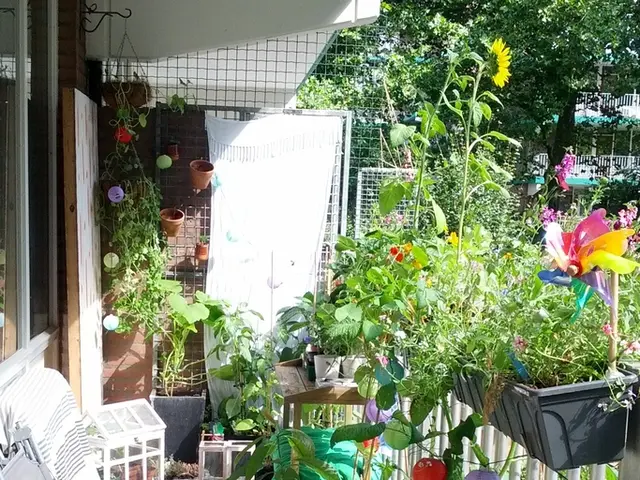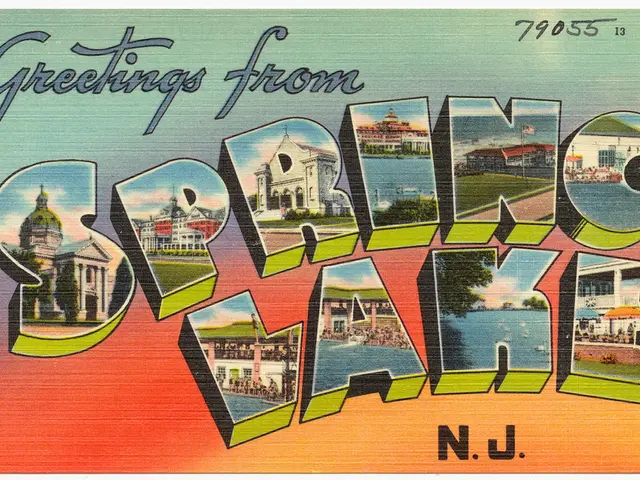Delving Deeper into the Shift of Food Dyes: A Healthier Future on the Horizon
FDA Grants Approval to Three Plant-Based Food Colors; RFK Jr. alleges business tactics intensifying
HHS Secretary Robert F. Kennedy Jr. shares insights on the natural food dye surge and the 'Make America Healthy Again' movement during his appearance on 'Fox & Friends Weekend.' A momentous leap forward for American health, the U.S. Food & Drug Administration (FDA) has endorsed three organic hues for food items nationwide.
Enter the stage: Galdieria extract blue, butterfly pea flower extract, and calcium phosphate. Each of these substances has gained approval for manufacturers looking to color their goods in an all-natural fashion.
Martin Makary, FDA Commissioner, couldn't have been more fulfilled: "Promises made, promises kept," he cheerily announced in a press release. This declaration follows a ban on petroleum-based synthetic dyes, enacted due to public health concerns.
Last month, the US Department of Health and Human Services (HHS) in conjunction with the FDA deemed these synthetic dyes a hazard, taking a definitive stance against their presence within the food supply.
In his report, Makary underscored the FDA's diligent efforts to expedite the validation of natural food colorings as replacements for the outlawed artificial alternatives.
The Natural Hues Taking Over
Galdieria extract blue, a captivating blue pigment born from the unicellular red algae Galdieria sulphuraria, now blesses nonalcoholic beverages, breakfast cereal coatings, candies, frozen desserts, frostings, and a plethora of other sweet goodies.
Butterfly pea flower extract, sourced from the vibrant and versatile water-extracted dried petals of the butterfly pea plant, possesses the ability to create shades of blue, green, and purple. This dynamic flower has already made its mark on the beverage world, but its new-found expansions into cereals, crackers, candies, and assorted snacks broaden its impact.
Finally, the humble calcium phosphate takes the spotlight as a pristine, white dye. Manufacturers are now salivating at the prospect of incorporating this mineral-derived substance into their chicken products and candies.
The Food Industry's Embrace of Mother Nature
On a recent turn on "Fox & Friends Weekend," HHS Secretary Robert F. Kennedy Jr. shed light on this transition within the food industry. Gone are the days of reluctance—the food industry now readily embraces a more natural approach, eager to collaborate with federal agencies like the FDA.
As Secretary Kennedy put it, "The industry is coming to the table. They are talking to us. They are taking this seriously."
A Cataclysmic Change for a Safer Food Supply
Vani Hari, the celebrated Truvani founder and "Food Babe," shares the sentiment. "After this change, the industry will have no excuses not to convert their products to more natural sources," she asserts.
No longer can artificial dyes, harbingers of a slew of health issues, take center stage. Synthetic dyes are generally linked to an array of adverse health consequences, including:
- Neurobehavioral Effects
- Allergic Reactions
- Potential Cancer Risk
- Other Health Issues
As America adopts these all-natural alternatives, the path to a cleaner, healthier food system becomes more palpable. With Tyson Foods already planning to scrub petroleum-based synthetic dyes from their products by the end of May, it's evident that this shift is long overdue[2].
Emma Post, spokesperson for MAHA Action, rings in this positive fact: "We're one step closer toward a cleaner, healthier food system." It's exciting to imagine food companies paving the way for healthier alternatives as they contribute to the "Make America Healthy Again" initiative and eradicate toxic, petroleum-based chemicals from our food supply.
References:1. Natural Food Dyes Make the Grade, FDA Concurs2. Tyson Foods to Remove Petroleum-Based Synthetic Dyes from Products3. A seaweed-based food coloring approved for use in the US4. Artificial food dyes and ADHD5. Synthetic Food Dyes: A Rainbow of Risks
- This shift towards natural food dyes marks a significant step forward in the arena of health-and-wellness.
- Science continues to unravel natural alternatives for coloring food items, paving the way for fitness-and-exercise enthusiasts who prioritize clean consumption.
- The nutritional benefits of embracing natural food dyes extend beyond aesthetics, contributing to overall nutrition.
- As finance becomes increasingly aware of consumer preferences, investments in entrepreneurship focusing on natural food production are expected to soar.
- Interior designers can capitalize on this trend, incorporating the use of plant-based food colorings into their interior-design projects for a more harmonious living space.
- Leadership in food companies is encouraged to fostering a conscious approach to diversity-and-inclusion, embracing consumers' demands for transparency and natural ingredients.
- The rise of wearables and smart home devices might include new features for healthy eating tracking, further promoting natural food dyes' popularity.
- Cybersecurity risks in the food industry, such as tampering with food colorings, could be mitigated by the use of more natural, traceable alternatives.
- The lifestyle of many consumers is evolving to prioritize sustainable-living, making natural food dyes an attractive choice for both health and the environment.
- Outdoor living enthusiasts who love gardening can grow their own plants for natural food colorings, adding a personal touch to their culinary creations.
- The fashion-and-beauty industry may explore the use of natural food dyes in cosmetics, aligning with consumer demands for eco-friendly products.
- Food and drink manufacturers could develop new beverages and edibles tailored for certain dietary preferences, such as vegan and gluten-free options containing natural food dyes.
- The family dynamics in many households might change as parents prioritize natural food dyes for their children's snacks and meals.
- Small-business owners in the food industry might find success by focusing on creating artisanal, naturally colored food items.
- Investing in natural food production startups can offer excellent returns for those looking to profit from this growing trend.
- Wealth management firms may add natural food dye-focused investment options to their portfolios, catering to clients interested in socially responsible ventures.
- A focus on home-and-garden improvements could extend to the kitchen, with consumers opting for natural coloring for appliances and countertops.
- Home improvement projects, such as building a home farm, could incorporate natural food dye plants for a hands-on and eco-friendly approach.
- The love and dating scene may celebrate shared values, such as prioritizing natural food dyes, as a conversation starter or common ground.
- The business world, realizing the potential of natural food dyes, might expand beyond food and beverage products.
- Talented professionals, particularly in the field of careers in food sciences, may find new opportunities in natural food coloring research and development.
- The housing market's appeal could grow for properties that promote healthy living, such as those with access to edible gardens providing colorful food dye plants.
- Personal-finance management can incorporate budgeting strategies that prioritize the cost of natural food dyes over artificial alternatives.
- Debt management tactics may advocate for cutting costs by choosing to make natural food dyes at home, rather than purchasing prepackaged products.
- Savvy shoppers can seek out deals and discounts on gadgets, such as appliances for making natural food dyes, to minimize expenses.
- Smartphone users can access apps that offer tips and recipes for making natural food dyes, fostering a sense of community around this trend.
- Data and cloud computing advancements could facilitate information sharing on natural food coloring recipes and techniques, benefiting both consumers and producers.
- The art of gardening can extend to raising pets, such as butterfly pea plants, which provide vibrant natural food dyes.
- Sustainable living extends to pet care, with responsible pet owners opting for eco-friendly practices like natural food dyes for their pets' treats.
- As the world embraces the natural food dye revolution, it's not only about personal health but also making a statement in the realms of pop-culture and social responsibility.








